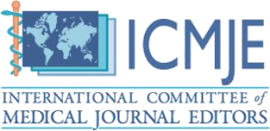Language Choice among the Punjabi Sikh Community in Kota Kinabalu, Sabah, Malaysia
DOI:
https://doi.org/10.51611/iars.irj.v12i01.2022.188Keywords:
Punjabi; assimilation; enculturation; minority; social integrationAbstract
When a minority group interacts and comes into contact with individuals from the dominant language, they tend to choose a commonly understood language. Language choice is forced to negotiate their own identity and cultural practices with their dominant culture. This can create a conflict, as in the case of the Punjabi community, who try to adopt new cultural norms and maintain their own identity when living in a dominant cultural group. With the growing number of Punjabis in Sabah, specifically in the capital city of Kota Kinabalu, East Malaysia, this situation presents an excellent case for advancing our knowledge about the challenges that the process of assimilation and enculturation may have on the Punjabi community living in a society which predominantly is of a different culture in Sabah. This study thus addresses the impact of social integration among a small population of the Punjabi Sikhs living in Kota Kinabalu. Data is collected using a questionnaire and interviews with several community members. The study draws implications on how a minority group adapts to the dominant culture and provides possible avenues for future research.
Downloads
References
Abramitzky. R., L. Boustan, and Eriksson, K. “DO IMMIGRANTS ASSIMILATE MORE SLOWLY TODAY THAN IN THE PAST?” AER: Insights, 2(1), 125–141 2020. https://doi.org/10.1257/aeri.20190079 DOI: https://doi.org/10.1257/aeri.20190079
Aisyah Tumin, Mohd Salehuddin, Mohd Zahari Noriza Ishak Khairunnisa Mohamad Abdullah. “THE INFLUENCE OF BABA NYONYA ACCULTURATION ON THE MALACCA FOOD IDENTITY.” Journal of Tourism, Hospitality & Culinary Arts (JTHCA), 9 (2), 467-480 2017.
Alagappar, P. N., C. Dealwis, and M.K. David. “CULTURAL MAINTENANCE WITHIN THE TAMIL MINORITY IN KUCHING: SPANNING THREE GENERATIONS.” Journal of Intercultural Communication Research, 45(2),145175 2016. DOI: https://doi.org/10.1080/17475759.2016.1154481
Bordon, J. and Z. Wang. “ACCULTURATION, ENCULTURATION, AND ETHNIC IDENTITY: COMPARING AMERICAN RAISED AND FOREIGN-RAISED ASIANS IN THE U.S.” Journal of Asia Pacific Counseling, 8(2), 37-56 2018. DOI: https://doi.org/10.18401/2018.8.2.1
David, Maya. K, N. Ibtisam and Sheena Kaur. “THE PUNJABI COMMUNITY IN THE KLANG VALLEY, MALAYSIA- LANGUAGE MAINTENANCE OR LANGUAGE SHIFT?” International Journal of the Sociology of Language,161, 1-20 2003. DOI: https://doi.org/10.1515/ijsl.2003.026
David, Maya. K. “LANGUAGE SHIFT, CULTURAL MAINTENANCE AND ETHNIC IDENTITY: A STUDY OF A MINORITY COMMUNITY: THE SINDHIS OF MALAYSIA.” International Journal of the Sociology of Language,130, 67-76 1998. DOI: https://doi.org/10.1515/ijsl.1998.130.67
David, M.K., C. Dealwis and Nambiar, M. “THE PUNJABI SIKH COMMUNITY IN KUCHING: ASSIMILATION OR ENCULTURATION.” IARS International Research Journal, 5(1) 2015. doi: 10.51611/iars.irj.v5i1.2015.43. DOI: https://doi.org/10.51611/iars.irj.v5i1.2015.43
David, M. K. and S. Govindasamy. “LANGUAGE EDUCATION AND NATION BUILDING IN MULTILINGUAL MALAYSIA.” In J. Bourne and E. Reid (Eds.), Language education: World yearbook of education 2003 (pp. 215-226). London: Kogan Page 2003.
David, M. K. and I. Naji. “DO MINORITIES HAVE TO ABANDON THEIR LANGUAGE? A CASE STUDY OF THE MALAYSIAN TAMILS.” The International Scope Review, 2 (3), 1-15 2000.
David, M.K. and C. Dealwis. “REASONS FOR ASSIMILATION: FOCUS ON THE INDIAN MUSLIMS IN KUCHING, MALAYSIA.” Migracijske i etničke teme 25, 35–48 2009.
Department of Statistics Malaysia, Official Portal. “CURRENT POPULATION ESTIMATES, MALAYSIA, 2019.” https://www.dosm.gov.my/v1/index.php?r=column/cthemeByCat&cat=155&bul_id=aWJZRkJ4UEdKcUZpT2tVT090Snpydz09&menu_id=L0pheU43NWJwRWVSZklWdzQ4TlhUUT09 2020.
Gill. S. S. “SEJARAH PENGLIBATAN ORANG SIKH DALAM PASUKAN CONSTABULARI BERSENJATA BORNEO UTARA, 1882-1949 DAN KESAN TERHADAP IDENTITI.” Jebat, 34, 49-70 2007. https://core.ac.uk/download/pdf/11489651.pdf
Gordon, M. M. “ASSIMILATION IN AMERICAN LIFE.” New York: Oxford University Press 1964.
Kawangit, R. M. “ASSIMILATION OF BABA AND NYONYA IN MALAYSIA.” International Journal of Social Science Studies. 3(2): 11-20 2015. https://www.researchgate.net/publication/276324405_Assimilation_of_Baba_andNyonya_in_Malaysia#fullTextFileContent DOI: https://doi.org/10.11114/ijsss.v3i2.651
Kim, B. S. K. and J.M. Abreu. “ACCULTURATION MEASUREMENT: THEORY, CURRENT INSTRUMENTS, AND FUTURE DIRECTIONS.” In J. G. Pon-terotto, J. M. Casas, L. A. Suzuki, & C. M.Alexander (Eds.), Handbook of multicultural counseling (2nd ed., pp. 394–424). ThousandOaks, CA: Sage 2001.
Lee, R. M., E. Yoon and H.T. Liu-Tom. “STRUCTURE AND MEASUREMENT OF ACCULTURATION/ENCULTURATION FOR ASIAN AMERICANS USING THE ARSMA-II.” Measurement and Evaluation in Counselling and Development, 39, 42-55 2006. DOI: https://doi.org/10.1080/07481756.2006.11909789
Macionis, J.J. “SOCIOLOGY.” 8th ed. Upper Saddle River, NJ: Prentice Hall 2001.
Malhi, R. S. “FROM LOYAL BRITISH SUBJECTS TO ARDENT REVOLUTIONARIES ANTI-BRITISH POLITICAL ACTIVITIES OF THE SIKHS IN MALAYA 1914-1945.” Doctoral thesis. Asia eUniversity 2015.
Mohd Salehuddin, Mohd Zahari, Aisyah Tumin, Mohd Hafiz Hanafiah and Hairul Nizwan Abdul Majid. “HOW THE ACCULTURATION OF BABA NYONYA COMMUNITY AFFECTS MALACCA FOOD IDENTITY?” Asian Ethnicity, 20:4, 486-502 2019.https://www.researchgate.net/publication/332559360_How_the_acculturation_of Baba_Nyonya_community_affects_Malacca_food_identity [accessed Jun 11 2020]. DOI: https://doi.org/10.1080/14631369.2019.1605825
Mohd Zahirwan Halim Zainal Abidin1, Nurul Fadly Habidin, Muhammad Yusri Yusof @ Salleh, Paiz Hassan, Hamdi Rahman Mohd Yaacob, Mazlah Yaacob and Abd Munir Mohd Noh. “ASSIMILATION OF THE MALAY CULTURE TOWARDS THE STRAIGHTS OF CHINESE COMMUNITY IN THE STATE OF KELANTAN: STUDY IN KAMPUNG PASIR PARIT, CHETOK, PASIR MAS, KELANTAN.” International Journal of Academic Research in Business and Social Sciences, 6 (11). 38-51 2016. https://www.researchgate.net/publication/310361915_Assimilation_of_the_Malay_Culture_towards_the_Straights_of_Chinese_Community_in_the_State_of_Kelantan_Study_in DOI: https://doi.org/10.6007/IJARBSS/v6-i11/2372
Moorthy, R. “THE EVOLUTION OF THE CHITTY COMMUNITY OF MELAKA.” Jebat, 36, 1-15 2009. https://core.ac.uk/download/pdf/11489637.pdf
Punitha, S., and S. Kumaran. “CULTURAL ASSIMILATION AMONG MALAYS AND INDIANS IN MALAYSIA.” Journal of Indian Culture and Civilization, 1, 1–27 2014.
Rosmaliza Muhammad, Mohd Salehuddin MohdZahari, Mohd Shazali Md.Shariff, Khairunnisa Mohamad Abdullah. “MALAYSIAN FOODWAYS: ACCULTURATION/ASSIMILATION TOWARDS AUTHENTICITY SUSTAINABILITY AMONG DIASPORIC COMMUNITY.” Procedia - Social and Behavioral Sciences, 222,367-373 2016. https://doi.org/10.1016/j.sbspro.2016.05.184 DOI: https://doi.org/10.1016/j.sbspro.2016.05.184
Sidhu, S.S. “SIKH GURDWARAS IN MALAYSIA AND SINGAPORE: AN ILLUSTRATED HISTORY 1873-2003.” Kuala Lumpur: Sikh Naujawan Sabha Malaysia 2003.
Tan, Chee Beng. “CHINESE PERANAKAN HERITAGE IN MALAYSIA AND SINGAPORE.” Kuala Lumpur: Fajar Bakti 1993.
Teo, K. S. “THE PERANAKAN CHINESE OF KELANTAN: A STUDY OF THE CULTURAL, LANGUAGE AND COMMUNICATION OF AN ASSIMILATED GROUP IN MALAYSIA.” London: ASEAN Academic Press 2003.
Teske, R. H. C., and B.H. Nelson. “ACCULTURATION AND ASSIMILATION: A CLARIFICATION.” American Ethnologist. 1 (2): 351-367 1974. DOI: https://doi.org/10.1525/ae.1974.1.2.02a00090
Yeh, C. J. “AGE, ACCULTURATION, CULTURAL ADJUSTMENT, AND MENTAL HEALTH SYMPTOMS OF CHINESE, KOREAN, AND JAPANESE IMMIGRANT YOUTHS.” Cultural Diversity and Ethnic Minority Psychology, 9(1), 34–48 2003. https://doi.org/10.1037/1099-9809.9.1.34 DOI: https://doi.org/10.1037/1099-9809.9.1.34
Yusoff, N., N. Samsuri, S. Ayob and Y.C. Teo. “EMOTIONAL EXPRESSION OF THE MALAYSIAN CHINESE TOWARDS THE MALAY CULTURAL HERITAGE VISUALIZATION.” Journal of Ethnic and Cultural Studies, 6 (3). 53-63 2019. http://dx.doi.org/10.29333/ejecs/259 DOI: https://doi.org/10.29333/ejecs/259
Zhang, S., and B. Moradi. “ASIAN AMERICAN ACCULTURATION AND ENCULTURATION: CONSTRUCT CLARIFICATION AND MEASUREMENT CONSOLIDATION.” The Counseling Psychologist, 41, 750-790 2013. DOI: 10.1177/0011000012456882. DOI: https://doi.org/10.1177/0011000012456882
Downloads
Published
Issue
Section
License
Copyright (c) 2022 Sheena Kaur, Gurcharan Singh Bishen Singh, Maya Khemlani David, Thilagavathi Shanmuganathan, , Francisco Dumanig

This work is licensed under a Creative Commons Attribution 4.0 International License.
Author(s) hold complete right on the content of this article. Copyright to the content are governed as per Copyright Policy of the Journal.





















